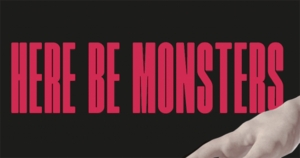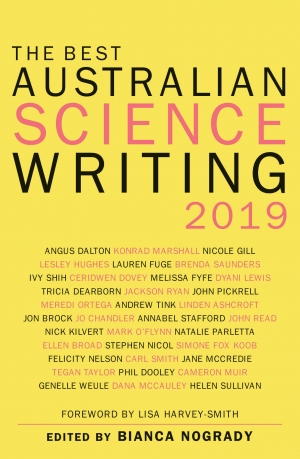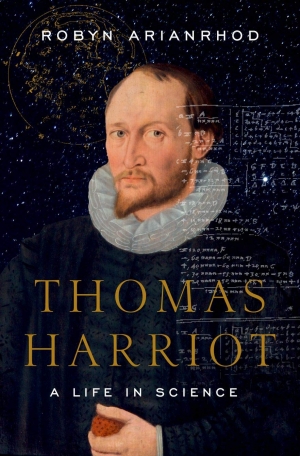Robyn Arianrhod
Robyn Arianrhod reviews 'Here Be Monsters: Is technology reducing our humanity?' by Richard King
Back in the day, I was wary about making a career in science. It wasn’t just the lack of women; it was also a sense of moving into alien territory. After all, I had absorbed feminist critiques suggesting that modern science had been shaped by (male) scientists’ urge to ‘penetrate’ nature by reducing it to its parts – an urge that had blinded them to the power of the whole. And I was all for the whole – for Gaia, the whole Earth, not for atom splitting and nuclear bombs. But it was Rachel Carson’s Silent Spring (1962) that offered the most famous argument against reductionism. Carson pointed out that when scientists developed pesticides to kill specific insects, they didn’t take sufficient account of the knock-on effect on the environment, including the starved or poisoned birds whose absent songs would manifest in increasingly silent springs. Half a century on, we are aware of many examples of the damage reductive thinking can do, especially the burning of fossil fuels to produce electricity, changing the whole climate in the process. In Here Be Monsters, Richard King deftly explores another area of concern, which he calls ‘technoscience’, a mix of science, technology, and neoliberal capitalism that reduces everything to its parts – to genes, bits of information, and individual consumers, losing sight of the whole person and their whole community.
... (read more)Robyn Arianrhod reviews 'What’s Eating the Universe? And other cosmic questions' by Paul Davies
Paul Davies, the British physicist who brightened up the Australian science scene when he was a professor at the University of Adelaide in the 1990s, is currently director of the Beyond Center for Fundamental Concepts in Science at Arizona State University. Beyond describes itself as ‘a pioneering center devoted to confronting the really big questions of science and philosophy’. It also aims to present science publicly ‘as a key component of our culture and of significance to all humanity’, something Davies has been doing for thirty years, in popular talks, articles, and books such as About Time (1995).
... (read more)Robyn Arianrhod reviews 'The Art of More: How mathematics created civilisation' by Michael Brooks
Were you one of those reluctant mathematics students who complained, ‘What’s the point of all this?’ If so, rest assured: Michael Brooks has made a compelling case for the role mathematics has played in making ‘civilisation’ possible. If you still need convincing, he also discusses research suggesting that doing maths is good for your brain.
... (read more)Robyn Arianrhod reviews 'Helgoland' by Carlo Rovelli, translated by Erica Segre and Simon Carnell
Theoretical physicist Carlo Rovelli has a gift for writing short, conversational, popular physics books. His earlier works, notably Seven Brief Lessons in Physics (2015) and The Order of Time (2018), have been bestsellers, and Helgoland is continuing the trend.
... (read more)Robyn Arianrhod reviews 'The Knowledge Machine: How an unreasonable idea created modern science' by Michael Strevens
If you have ever wondered about the imaginative, wondrous side of science – for instance, how Einstein used maths to predict the existence of gravitational waves, or how a metaphor led to the astonishing discovery that the spinning earth drags space-time around it like molasses around a spoon, this is not the book for you. But if you want to know why scientists had the patience to keep refining their experiments until they detected this barely perceptible rippling of space-time, or why they have the kind of grit made legendary by Marie and Pierre Curie, sifting through tonnes of pitchblende for a speck of radium, you will find an intriguing, bold, and controversial answer in The Knowledge Machine.
... (read more)Robyn Arianrhod reviews 'Celestial Tapestry: The warp and weft of art and mathematics' by Nicholas Mee
Celestial Tapestry is a gem, indeed, a trove of gems: lavishly illustrated cameos from the science and history of art and mathematics, woven into a narrative about pattern and symmetry. We humans have an innate appreciation of symmetry, judging from 5,000 years of art, architecture, mathematics, and mythical and religious symbolism. After all, symmetry is all around us – in the shapes of our bodies, snowflakes, and seashells, and in the fractal-like branching of twigs and blood vessels. In its abstract, mathematical form, symmetry even underlies our modern theories of fundamental physics.
... (read more)Robyn Arianrhod reviews 'Antimony, Gold, and Jupiter’s Wolf: How the elements were named' by Peter Wothers
Imagine you’re trying to make sense of the universe five hundred years ago, when astronomers believe there are just seven visible ‘planets’ wandering about the Earth: the sun and moon plus Mercury to Saturn. Intriguingly, there are also seven known metals: gold, silver, copper, iron, tin, lead, and mercury. For hundreds of years there have been just seven known ‘planets’ and seven metals. Wouldn’t you be just a little tempted to see more than a coincidence here? Take gold, for example, which ‘does not react with anything in the air or the ground, and so retains its brilliance seemingly forever’: surely its power is similar to that of the ever-shining sun?
... (read more)Robyn Arianrhod reviews 'The Best Australian Science Writing 2019' edited by Bianca Nogrady
Reading good science writing is not just pleasurable and informative: it’s also necessary if we want to live engaged and examined lives in today’s hyper-technological, climate-changing world. The Best Australian Science Writing 2019 offers readers all these things – the delight in good writing, the satisfaction of learning, and the sobering reckoning with our society’s environmental impact and lack of political engagement with science. Yet it’s not afraid to challenge science itself on occasion – showing ‘its flaws as well as its finer moments’, as editor Bianca Nogrady puts it.
... (read more)Elizabeth Finkel reviews 'Thomas Harriot: A life in science' by Robyn Arianrhod
Galileo and Kepler went down in history for prising European science from the jaws of medieval mysticism and religion. But where was England’s equivalent? Newton would not make his mark for another century. Surely the free-thinking Elizabethans also had a scientific star?
They did: Thomas Harriot (c.1560–1621). Most of us have never heard of him, for Harriot did not publish his findings. His day job was teaching navigation to Sir Walter Raleigh’s ship captains. Queen Elizabeth’s favourite was intent on colonising North America for the Crown. But it was also down to Harriot’s personality: retiring, cautious, and meticulous.
... (read more)








